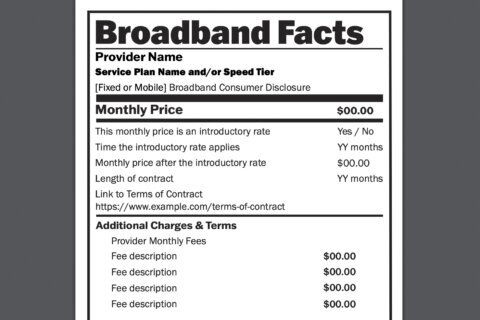Credit scores are three-digit numbers that you probably don’t pay much attention to on an average day. But when it’s time to borrow money, these scores determine your interest rate and, ultimately, how much borrowing will cost you.
Credit scores are a key factor that creditors use to measure borrower risk before assigning an interest rate. Someone with poor credit has a higher risk of missing payments, so creditors charge a higher interest rate to compensate for that risk.
The opposite is true for borrowers with excellent credit scores. Someone with excellent credit has a lower risk of defaulting, so creditors are willing to offer them the most competitive interest rates.
[See: 12 Habits to Help You Take Control of Your Credit.]
How credit scores are calculated. The credit scoring model often used by creditors to determine creditworthiness is the FICO score, which ranges from 300 to 850.
There are other scoring methods you’ve probably come across, such as the VantageScore 3.0. Although the VantageScore isn’t a “true” FICO score, there are some similarities in how both scores are calculated.
Factors that impact scores include:
— Your payment history.
— The amount of debt you owe and percent of available credit used.
— The length of your credit history.
— The new accounts you open (new inquires).
— The type of accounts you have (credit cards, mortgages, auto loans, et cetera).
Considering these factors, here are things you can do to improve your score and land the most competitive interest rates.
1. Get errors and late payments removed from your history. Getting late payments removed can boost your credit score and increase your chances of landing the most competitive interest rates when you borrow money.
Look through your credit reports from each major credit bureau (Experian, Equifax and TransUnion) to make sure that all late payments are accurate. If you find incorrect late payments, mail a dispute to the credit bureaus and to the creditor reporting the inaccurate information.
Include the reason behind your dispute, proof to back up your claim and a copy of your credit report with the errors circled. Thanks to the Fair Credit Reporting Act, credit reporting entities must investigate your dispute unless the claim is frivolous.
If the late payments on your report are accurate, you can still ask creditors for forgiveness. If you’ve recently been paying your bills on time, your creditor may be willing to delete missed payments from your record. It never hurts to ask.
2. Pay off debt to reduce your revolving credit utilization. The amount of debt you owe is the second-most impactful factor used to calculate credit scores. One key aspect of this factor is your credit utilization on revolving accounts.
Revolving accounts, such as credit cards, are credit lines you use and pay off as needed. Revolving credit utilization is a ratio that shows the percentage of available credit you’re currently using.
To calculate revolving credit utilization, divide your credit card balances by your credit card limits and multiply by 100.
For example, let’s say you have two credit cards. Credit card A has an an available credit line of $800 and a balance of $600. Credit card B has an available credit line of $500 and a balance of $200.
Divide $800 (balance) by $1,300 (available credit) and then multiple by 100. In this scenario, you’re using 62 percent of your available credit, which is too high.
You want to keep your utilization below 30 percent. If your utilization is above 30 percent, pay off some debt and you may see a credit score bump.
[See: 10 Easy Ways to Pay Off Debt.]
3. Increase your credit limits. Another way to reduce your revolving credit utilization, besides paying off debt, is to request a credit line increase or open up a new credit card account.
Considering the example above, if you increase your available credit limits by $1,000, your utilization would drop to 35 percent.
If you decide to increase your credit limits or apply for a new credit card, do so with caution. For this tactic to work, you need to trust yourself to not spend more money. If your score is less-than-perfect because you have a habit of maxing out your credit cards, increasing your available credit won’t address the root of the problem.
One thing to note is that asking for a credit line increase or opening a new credit card account can cause a hard inquiry on your report and deduct a few points from your credit score. The points you may gain from lowering your credit utilization, however, can make up for the few you lose temporarily from a hard inquiry.
4. Piggyback on someone else’s excellent payment history. If you need to build credit history from scratch to improve your score, credit piggybacking is an option. Credit piggybacking is when you become an authorized user on another’s credit card that’s in excellent standing.
As an authorized user, the history from that account shows up on your credit history as well. Building credit history can take years and credit piggybacking can be a shortcut.
The best accounts to piggyback on are ones that are at least three years old and have an excellent payment track record. If you decide to piggyback on someone’s account, make sure that it’s someone you trust to continue paying on time.
[See: What to Do If You’ve Fallen (Way) Behind on Your Credit Card Payments.]
5. Use a credit-building loan or secured credit card to build credit. A short-term credit-building loan is another way to build positive credit history. A credit-building loan is similar to a personal loan. But instead of getting cash from the loan upfront, the cash is held in a savings account while you make installment payments.
After satisfying the loan terms, you get the lump sum of cash, plus interest earned from the savings account. Your loan payments show up on your credit history, which helps you build credit.
A credit-builder loan is a unique loan that’s offered by some banks and credit unions. If you’re interested in this product, reach out to the financial institutions you currently do business with to see whether it’s offered and at what cost.
Lastly, a secured credit card is another way to build or rebuild credit before shopping for a competitive interest rate on long-term loans, like a mortgage. A secured credit card is one you can get approved for with no prior history. You put down a cash deposit, which acts as collateral for your credit line, and your payments are reported to the credit bureaus.
More from U.S. News
12 Habits to Help You Take Control of Your Credit
8 Ways to Maximize Your Credit Card Rewards
11 Money Moves to Make Before You Turn 40
5 Ways to Boost Your Credit Score — And Land Competitive Interest Rates originally appeared on usnews.com







